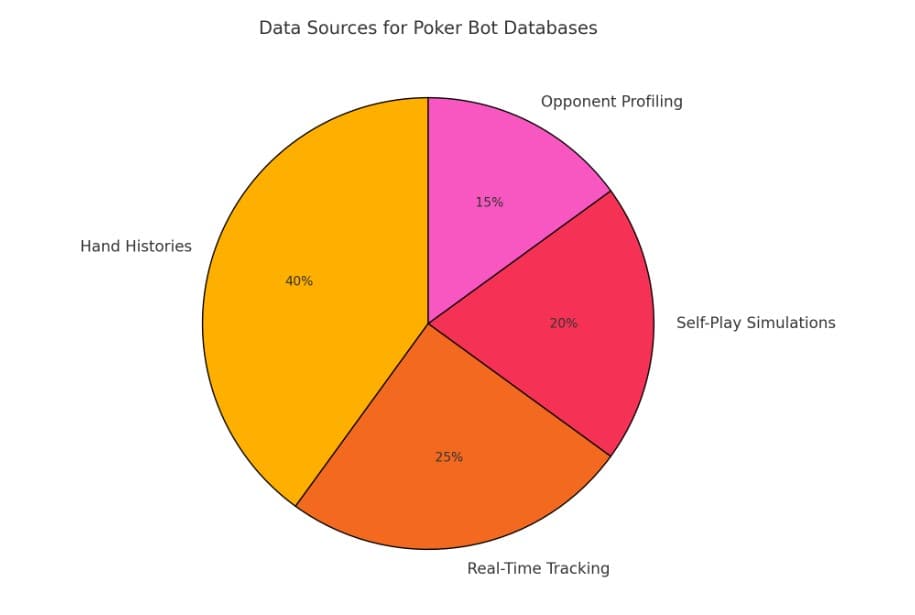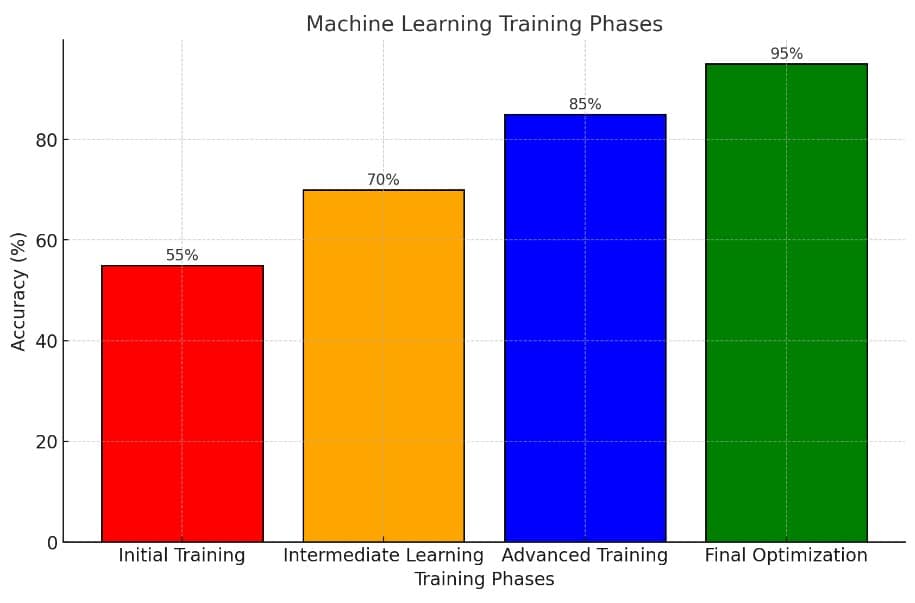
How AI poker bots build winning databases with data
Artificially intelligent poker bots have taken the world of online poker by storm. The artificially created huge databases they are rooted in enable the bots to analyze millions of poker hands for optimal strategy and make real-time adjustments against their opponents. But precisely, how do AI poker bots actually create those databases, and what kind of programming enables them to be relentless, data-driven competitors?
This article will explain in detail how AI-powered poker bots create, manage, and perfect the databases by writing state-of-the-art programming techniques to turn raw game data into intricate poker strategies.
What is a poker bot database?

A poker bot database is a cataloged database of all game data, from past hands and patterns in the players’ behavior to statistical probability and making decisions according to rule. This is considered the “memory” of the bot, through which a bot always makes mathematically viable decisions based upon the bot’s past game data and any pre-calculated probability.
The larger and more complex this database is, the smarter the bot becomes.
How poker bot databases are created
Poker bots are not pre-programmed with knowledge about poker; they build a database on the game themselves through some key programming that is explained below.
1. Gathering statistics via hand histories
Most data-gathering methods of poker bots depend on gathering hand histories from all major online poker sites. This includes but is not limited to:
- Player actions: Bets, Raises, Folds, Calls.
- Community cards: Flop, Turn, and River Cards Dealt.
- Pot size and bets: Total Money in Play at Every Stage of the Hand.
- Showdown results: This is where the final result is displayed, showing the players’ hands.
How it works: The information is scraped by the bots either by using their own developed scraping algorithms or by directly integrating their code with poker tracking software like PokerTracker 4 or Hold’em Manager.
2. Hand parsing and storage
After scraping the hand histories, the bot further parses them into a structured format for easy retrieval and analysis. This includes:
- Parsing libraries: Using libraries like NLTK-Natural Language Toolkit or Python scripts custom-written.
- Database management systems (DBMS): Physical data storage can be done using SQL, MongoDB, or PostgreSQL.
- Data normalization: Cleaning of data to remove duplicate, incomplete, or corrupt hands.
Example: A parsed hand may include but is not limited to the following:
- Hand ID: Unique identifier to track.
- Table position: Position of bot at the table.
- Opponent actions: Call, raise, and fold frequencies.
Final result: Win, loss, or tie with the size of the pot. 3. Machine Learning for Pattern Recognition
It means more than just storing data; it means that the bot needs to learn the patterns from the data. That’s where machine learning algorithms come in.
3. How machine learning is applied
- Supervised learning: The bot is trained on labeled hand histories to learn what the best action to take is, in accordance with predefined “right” decisions.
- Reinforcement learning: The bot plays against itself, receiving rewards for actions that turn out to be profitable and getting penalized for those that aren’t.
- Neural networks: These are deep algorithms, allowing bots to find patterns, including some of the bet sizing trends, bluff frequencies, and opponent styles. Example: After processing and analyzing 1 million hands, using this bot determines that players are going to be betting bigger with top pairs on wet boards while slow-playing strong hands on dry boards.
4. Real-time data analysis
Besides databases, poker bots need real-time data analysis so that they may work efficiently and effectively. Following are:
- Opponent profiling: It creates dynamic profiles of opponents with new information from the game.
- HUD integration: It displays, in-game, real-time VPIP and PFR statistics.
- Decision trees: It is also running the live decision-tree models based on possible opponent actions.
Example : If a player’s PFR is 20% and 3bet frequency is 10%, the bot will know exactly how to dynamically adjust the calling range.
How databases evolve and improve
The strong side of a poker bot database is to evolve and self-improve through the following:
1. Continous data updates
Poker bots are ever updating their database with new game data by refining the strategies concerning the following points:
- Hand history imports: It imports hand histories directly after every session.
- Real-time game tracking: Recording your live action in games.
- Opponent adaptation: To find new ways to play against different opponents to counter each new strategy.
2. Self-play simulations
Advanced poker bots create their strategy through the power of self-play simulations, continuously updating their database by playing millions of hands against themselves and thus create GTO-based strategies through simulations of an infinite amount of scenarios.
Example: A bot can simulate playing HU 100,000 times in order to perfect the all-in calling ranges under tournament pressure.
3. Decision-making algorithms and GTO solvers
The final step to database optimization now involves running decisions through GTO solvers, such as PioSOLVER or custom-built AI models. These really churn out very well-balanced strategies that are minimally exploitable due to mixing of bluffs, value bets, and check-raises in optimal frequencies.

Why poker bots excel at data-driven play
Unlike humans, a poker bot never tilts, forgets hands, or makes emotional decisions. The large database, based on pure mathematical logics with strategical data to support it, is useful in playing the following features of a game:
- Mathematical precision
- Unbiased decision-making
- Opponent profiling with real-time adjustment in their tendency.
Conclusion: the power of data in poker bot programming

Of course, the major secret of every AI poker-winning bot is a database: really massive hand histories in combination with the state-of-the-art model of machine learning and continuous real-time analysis create a poker bot able to outplay even the most skillful humans. With ever-improving AI technology, these bots are going to get smarter, faster, and way harder to beat.
It will show the developers and poker enthusiast alike how to build, optimize, and deploy databases-why data-driven play is going to be the future of competitive online poker.

